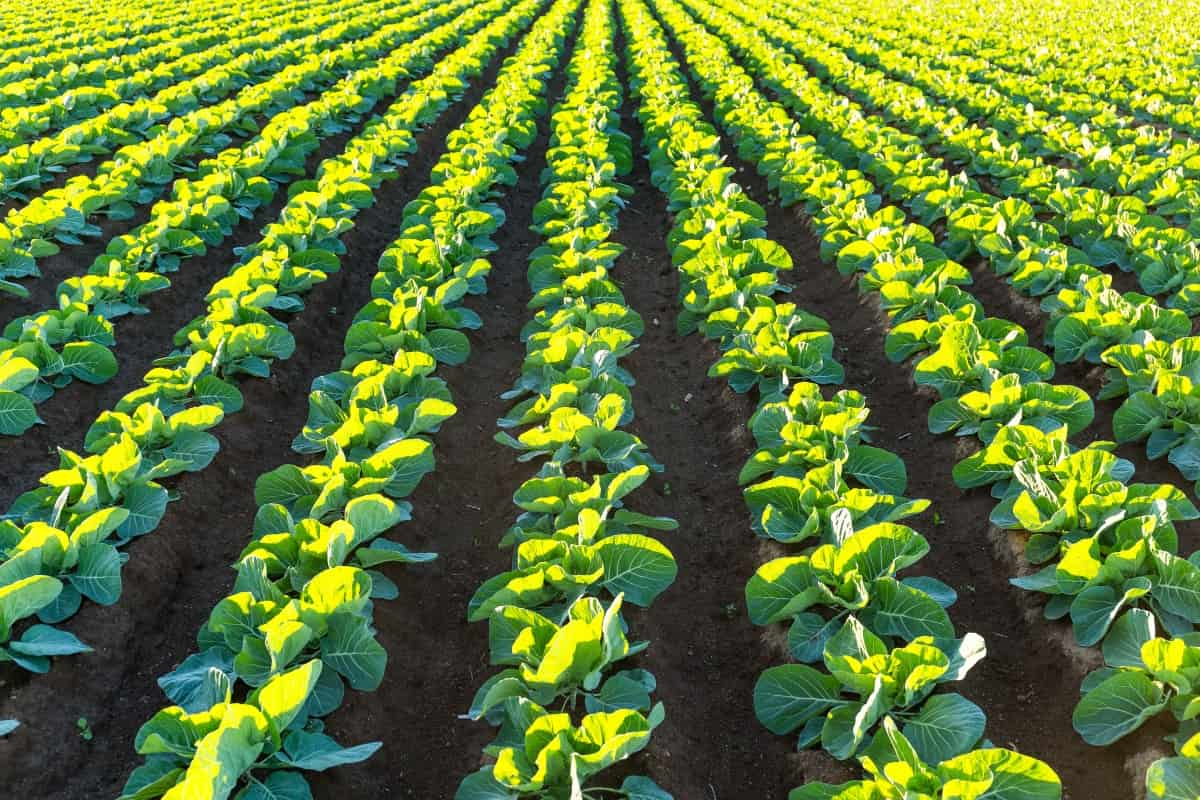Lettuce farming is a profitable venture that has grown significantly recently, especially in the USA. Lettuce is a high-demand crop that is used for different purposes, including salads, sandwiches, and other culinary purposes. If you’re looking to start lettuce farming in the USA, this step-by-step guide will help you to get started. Below we learn the Lettuce production guide, lettuce growing stages, and a step-by-step guide on starting your lettuce farm in the USA.

How to Start Lettuce Farming in the USA
Feasibility
The first step to starting a lettuce farm in the USA is to conduct a feasibility study. A feasibility study will help you determine if lettuce farming is viable in your location. You need to research the market demand, competition, and availability of water, land, and labor resources.
- Market demand: Look at the demand for lettuce in your area, and determine if there is a need for more lettuce producers. Consider the market size, competition, and growth potential.
- Competition: Research the existing lettuce farms in your area, and assess their production capacity, pricing, and quality. Determine if you can compete with them or if there is room for more lettuce producers in the market.
- Resources: Look at the availability of water, land, and labor. Determine if you have access to sufficient resources to start and sustain a lettuce farm.
Land
Once you have conducted your feasibility study, the next step is to secure a suitable piece of land for your lettuce farm. The land should be fertile, well-drained, and have easy access to water. Depending on your budget and long-term goals, you can either buy or lease land for your farm. When choosing a piece of land, consider the following factors:
- Soil type: The soil should be fertile and well-drained, with a pH of 6.0 to 7.0.
- Water source: You will need a reliable water source for your lettuce farm, such as a well or irrigation system.
- Location: Choose a location that is easily accessible, with good transportation links, and close to your target market.
- Size: Determine the size of the land you need based on your production capacity and long-term goals.
Right Variety
Lettuce comes in different varieties, and choosing the right variety is crucial for the success of your lettuce farm. Some popular lettuce varieties include romaine, iceberg, butterhead, and loose-leaf. Consider the market demand, climate, and growing conditions when choosing the right variety for your farm. For example, iceberg lettuce is a popular variety in the USA, but it is susceptible to disease and requires specific growing conditions. On the other hand, loose-leaf lettuce is easy to grow, requires less water, and is less susceptible to disease.
In case you missed it: How to Grow Lettuce in Greenhouse: A Step-by-Step Guide for Seed to Harvest

Prepare the Land
Once you have secured a piece of land and chosen the right variety of lettuce, the next step is to prepare the land. This involves clearing the land of any debris or weeds, tilling the soil, and adding compost or fertilizer. Soil preparation is essential for the success of your lettuce farm. The soil should be well-drained, loose, and fertile. If your soil is not fertile, add organic matter, such as compost or manure, to improve the soil quality.
Planting and Maintenance
After preparing the land, it’s time to plant your lettuce. The planting process involves sowing or transplanting seedlings, depending on the variety of lettuce you’ve chosen. Lettuce is a cool-season crop best grown in the spring or fall when temperatures are cooler. The ideal temperature for growing lettuce is between 60 to 65 degrees Fahrenheit.
Lettuce requires regular watering, but be careful not to overwater as it can lead to disease and poor growth. Maintaining your lettuce farm involves regular maintenance tasks such as weeding, fertilizing, and pest management. Monitoring your lettuce regularly is essential to detect any signs of pests or diseases and take appropriate action to prevent their spread.
Harvesting and Marketing
Lettuce can be harvested when it reaches maturity, which varies depending on the variety of lettuce. Harvesting involves cutting the lettuce heads or leaves from the plant, taking care not to damage the plant. Once harvested, you can market your lettuce to local restaurants, grocery stores, or farmers’ markets. You can also sell your lettuce online through e-commerce platforms like Amazon or Etsy.
In case you missed it: How to Grow Malabar/Ceylon Spinach in Greenhouse: A Step-by-Step Guide for Seed to Harvest

Conclusion
Starting a lettuce farm in the USA requires careful planning, research, and preparation. By following this step-by-step guide, you can start your lettuce farm and join the growing number of farmers in the USA. Monitor your lettuce regularly, take care of your soil and water, and market your products effectively to maximize your profits.
- Ultimate Guide to Ossabaw Island Hog: Breeding, Raising, Diet, and Care
- Ultimate Guide to Juliana Pig: Raising Facts, Size, Diet, Care, and Lifespan
- Raising Lleyn Sheep: Disadvantages, Price, Uses, Characteristics, and Care
- Ultimate Guide to Meishan Pig: Breed Facts, Breeding, Raising, and Care
- Ultimate Guide to Teacup Pigs: Raising, Diet, Lifespan, Cost, and Care
- Guide to Raising Poll Dorset Sheep: Facts, Profile, Characteristics, Uses, and Care
- Ultimate Guide to Bighorn Sheep: Characteristics, Diet, Lifespan, Breeding, and Lifecycle
- Ultimate Guide to Raising Katahdin Sheep: Farming Facts, Breed Profile, Uses, and Care
- Ultimate Guide to Raising Oreo Cows: Belted Galloways Farming Facts, Profile, Uses, and Care